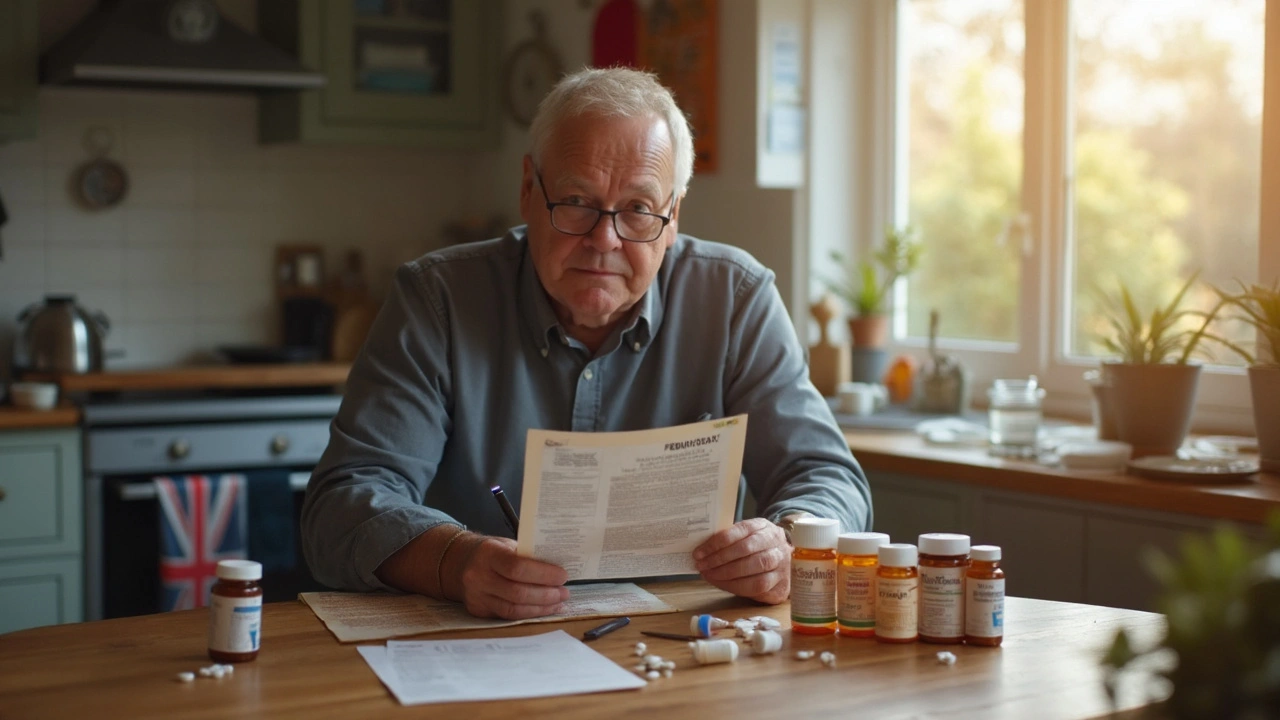Febuxostat interactions: key drug warnings and safety tips
Taking febuxostat for gout? Good to know how it mixes with other meds before you start. Febuxostat blocks xanthine oxidase, and that changes how some drugs behave in your body. A few interactions can be serious, so a quick check with your doctor or pharmacist will save trouble.
Major interaction you must not ignore
Do not take febuxostat with azathioprine or 6‑mercaptopurine. Those drugs rely on xanthine oxidase to break them down. When febuxostat blocks that enzyme, azathioprine and 6‑MP can build up and cause severe bone marrow suppression — low white cells, platelets, and red cells. That can lead to dangerous infections, bleeding, or anemia.
If you must be on both, a specialist must manage it. In practice, doctors usually avoid the combination or cut azathioprine/6‑MP doses dramatically and monitor blood counts very closely.
Other drugs and safety checks
There are other things to watch for even if they aren’t absolute bans. Tell your provider about any blood thinners (like warfarin), strong liver medicines, or immune‑suppressing drugs. Your doctor may want extra lab checks because febuxostat can affect liver enzymes and overall metabolism.
Before starting febuxostat, get baseline blood tests: CBC (blood count), liver tests, and kidney function. Repeat tests a few weeks after starting and then as your doctor recommends. If you notice unusual bruising, fevers, sore throat, yellowing skin, or dark urine, call your doctor right away — these can be signs of liver trouble or low blood counts.
Also tell your provider about over‑the‑counter meds and supplements. Herbal products, ibuprofen, and some other common drugs might seem harmless but can change how you feel on gout meds or raise risks in people with kidney or liver disease.
Practical steps you can take right now: always give your full medication list to any clinician; ask your pharmacist to run a drug interaction check when you pick up febuxostat; and keep a short record of lab dates and results so you and your doctor can spot trends.
Questions about a specific drug? Ask your prescriber or pharmacist and, if needed, request a safer alternative or a monitoring plan. That simple step prevents most problems and keeps your gout treatment working as intended.

Febuxostat Drug Interactions: Safe Use and Medication Combinations
Mixing febuxostat with other drugs can get complicated fast, especially for gout patients who often take multiple meds. This article breaks down how febuxostat interacts with common prescriptions and over-the-counter drugs, sharing data, examples, and tips for safer combos. Learn what to avoid, what to watch for, and how to talk with your doctor about combining medications effectively. Stay informed and take control of your gout treatment by understanding these crucial details. Anyone who takes febuxostat—or cares for someone who does—will get practical, easy-to-understand advice here.
Read More